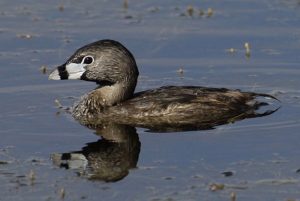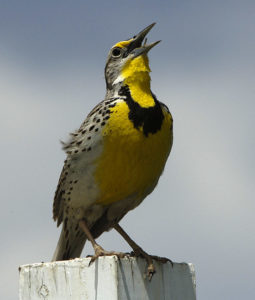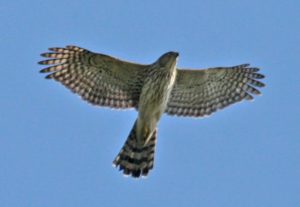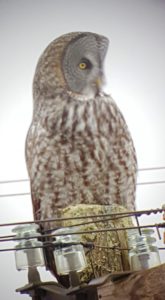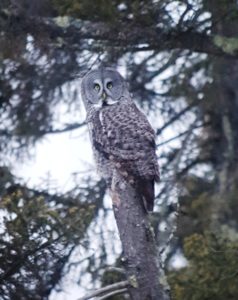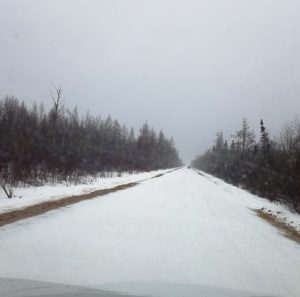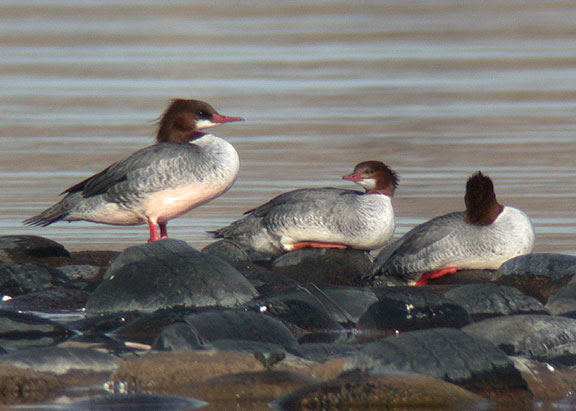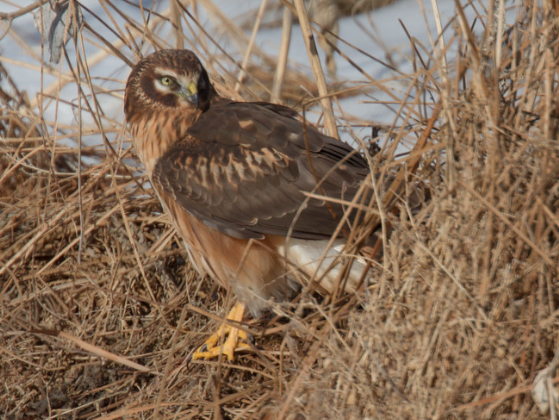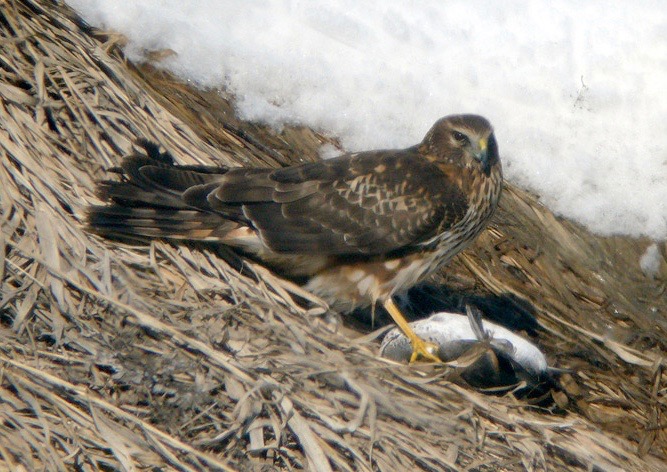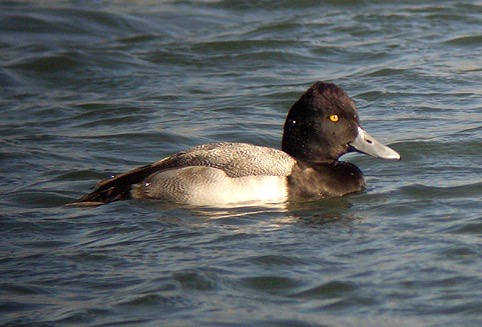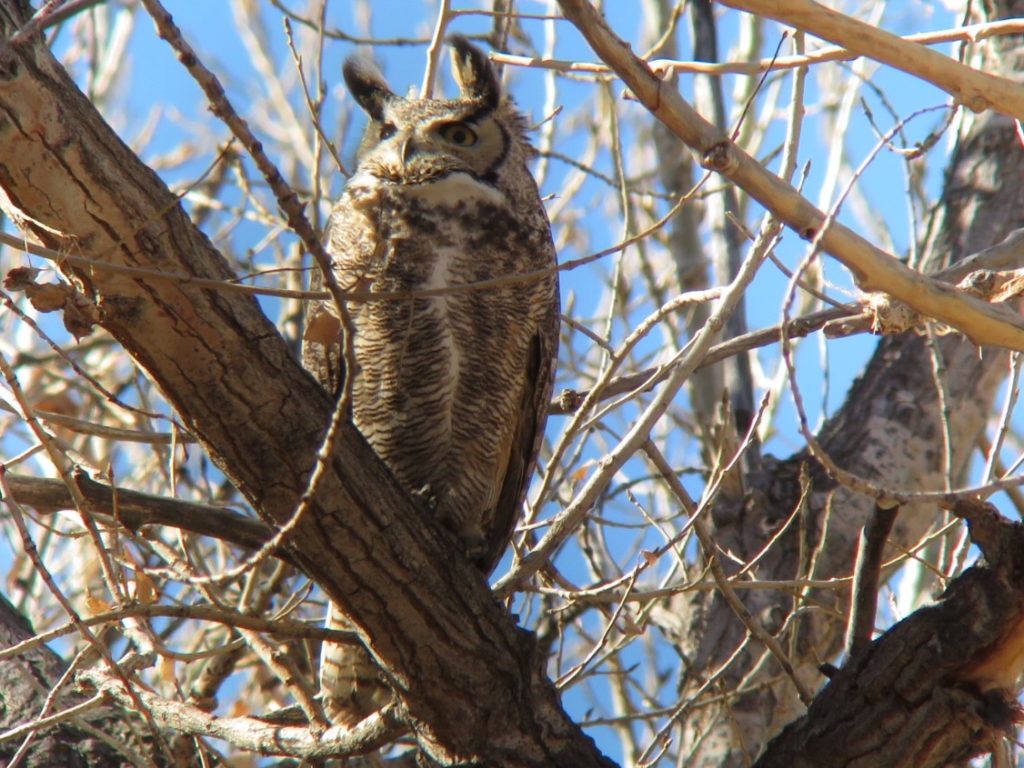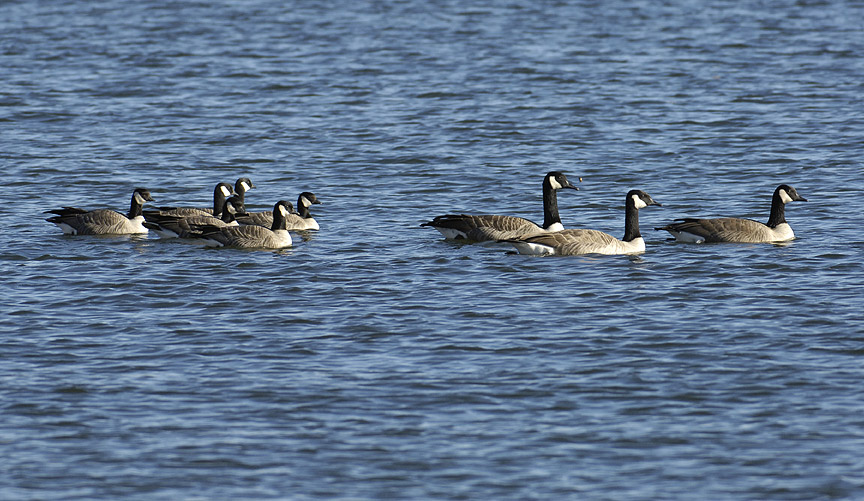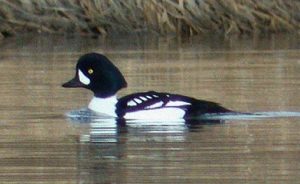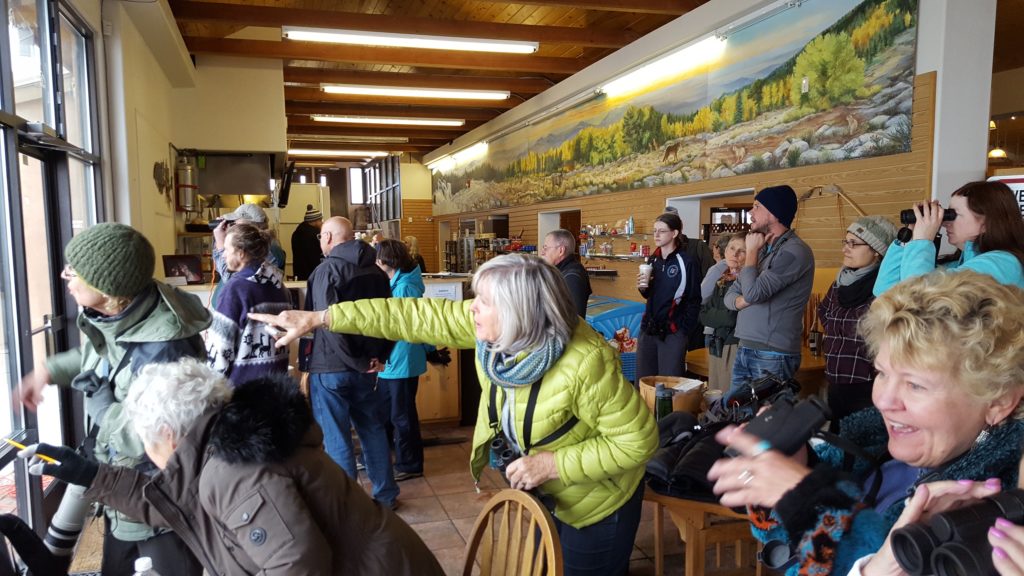
Twenty-one of us (fifteen adults and 6 kiddos) had a very nice spring morning at Majestic View Park in Arvada. This is a delightful 80 acre oasis in the city, with a superb nature center and a beautiful little lake and wetland area, and we were able to see 33 species of birds (see list below).
One of the early highlights for me was getting to hear the song of the Pied-billed Grebe. Though I may have heard it previously, I had forgotten the initial rapid hooting of the song.
We also got see and hear a beautiful Western Meadowlark.
Perhaps the main highlight of the morning was getting to see two species of Accipiter hawks. Accipiters are a group of forest-dwelling hawks that have short rounded wings and long tails that facilitate their ability to maneuver rapidly through trees and shrubs. When out in the open they have a characteristic flight pattern of several rapid flaps and a glide. Because they spend so much of their time below the forest canopy they tend to be observed less often than other hawks.
We have three species of Accipiters here in Colorado. The largest is the Goshawk, found predominantly in conifer and mixed conifer-aspen montane forests. The intermediate sized is the Cooper’s Hawk which is found with some regularity in cottonwood gallery stream-side forests, coniferous forests, and urban habitats with tall trees. The Sharp-shinned Hawk is the smallest and prefers coniferous, aspen, and stream-side habitats. Both the Cooper’s and Sharp-shinned have adapted to urban environments opportunistically taking prey from bird feeders.
We were able to see what appeared to be an adult Sharp-shin perched at a distance. Note the rounded head with the eye centered in the head. We then had a great look at an immature Cooper’s as it flew directly over us. Note the straight front to the wings with the head sticking out in front of the wings (with Sharpies the wings are pushed forward and the head is recessed between them).
Overall, a great morning! I look forward to seeing you again soon on another Front Range Birding Company bird walk or at the store.
Good birding! Chuck Aid
Majestic View Park, May 6, 2017
Front Range Birding Company
33 species
Canada Goose (Branta canadensis) 4
Mallard (Anas platyrhynchos) 7
Pied-billed Grebe (Podilymbus podiceps) 2
Double-crested Cormorant (Phalacrocorax auritus) 4
Great Blue Heron (Ardea herodias) 1
Snowy Egret (Egretta thula) 1
Turkey Vulture (Cathartes aura) 2
Sharp-shinned Hawk (Accipiter striatus) 1
Cooper’s Hawk (Accipiter cooperii) 1
Red-tailed Hawk (Buteo jamaicensis) 2
Eurasian Collared-Dove (Streptopelia decaocto) 1
Mourning Dove (Zenaida macroura) 2
Broad-tailed Hummingbird (Selasphorus platycercus) 3
Belted Kingfisher (Megaceryle alcyon) 1
Northern Flicker (Colaptes auratus) 3
American Kestrel (Falco sparverius) 1
Blue Jay (Cyanocitta cristata) 8
Black-billed Magpie (Pica hudsonia) 2
American Crow (Corvus brachyrhynchos) 1
Tree Swallow (Tachycineta bicolor) 7
Barn Swallow (Hirundo rustica) 1
Cliff Swallow (Petrochelidon pyrrhonota) 4
Black-capped Chickadee (Poecile atricapillus) 2
White-breasted Nuthatch (Sitta carolinensis) 1
Ruby-crowned Kinglet (Regulus calendula) 1
American Robin (Turdus migratorius) 9
European Starling (Sturnus vulgaris) 4
Red-winged Blackbird (Agelaius phoeniceus) 16
Western Meadowlark (Sturnella neglecta) 1
Common Grackle (Quiscalus quiscula) 23
Brown-headed Cowbird (Molothrus ater) 5
House Finch (Haemorhous mexicanus) 8
House Sparrow (Passer domesticus) 2


